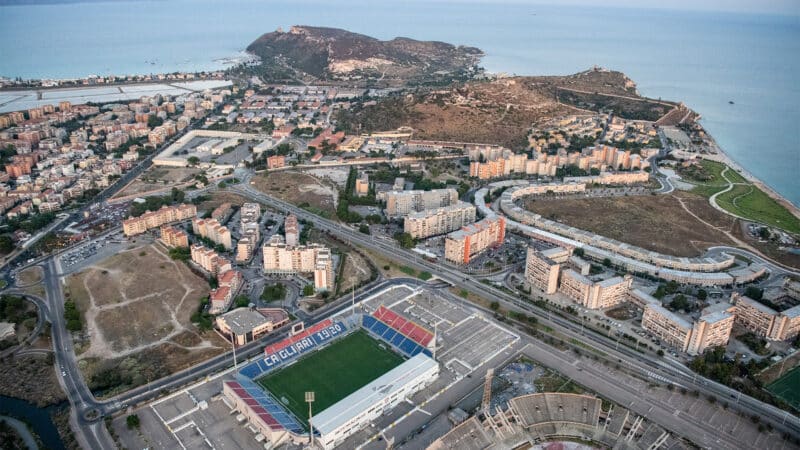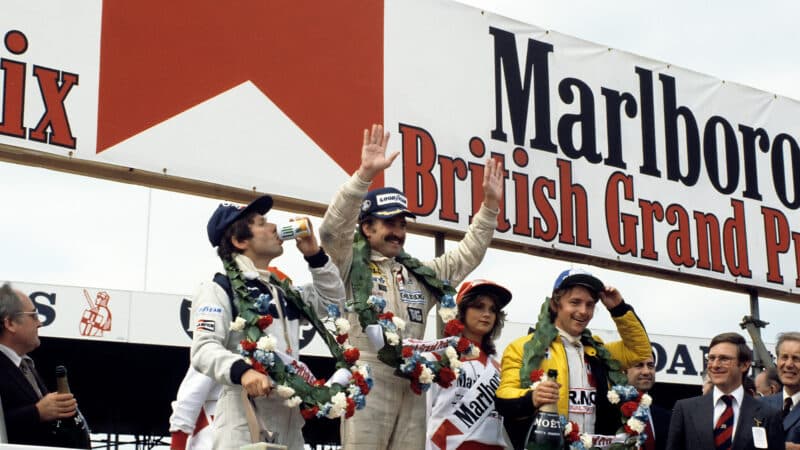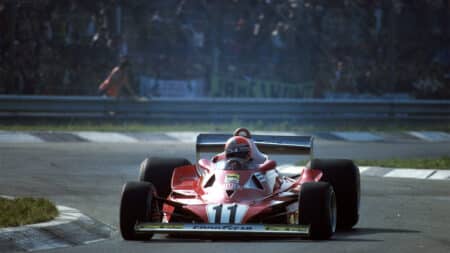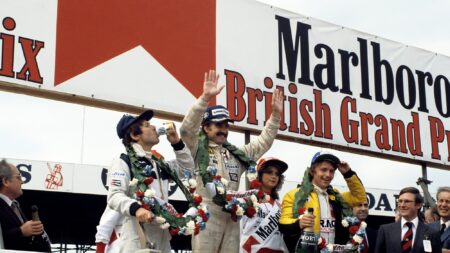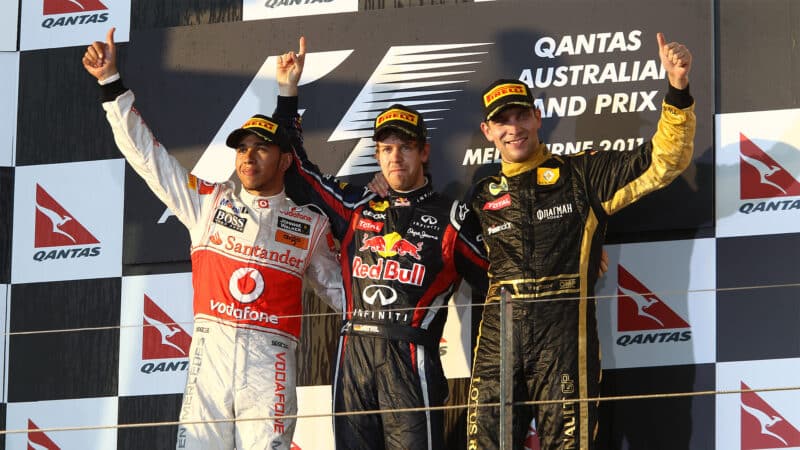He never courted the limelight even in his pomp — as an interviewee he would leave journalists in no doubt that he would rather be doing engineering work than media work — yet he was fearlessly outspoken, which meant that he often provided damn’ good copy. Moreover, amusingly, if he wanted to be seriously indiscreet — and he often did for he was both irascible and fearless — he would alert you to the fact that what he was about to say next was too sensitive for publication, off the record in other words, then bellow it so thunderously that everyone in the F1 paddock would hear it anyway. Put it this way: if you think the famously stentorian actor Brian Blessed has a booming voice, you cannot have heard Patrick Head in full flow.
In terms of formally heading up Williams’ technical operation, he finally called it a day in 2012. The last F1 grand prix of that season was the Brazilian Grand Prix, in late November, a wet race, in which Williams did not do well: Bruno Senna shunted himself out on lap one, and Pastor Maldonado did likewise a lap later. As a swansong for Patrick it was a damp squib. The next day we all flew back to the UK. By that time I had been a McLaren team member for a number of years, I had been sitting near Patrick on the plane, and it so happened that I walked off it and into Heathrow right behind him, and queued right behind him at passport control. Without wishing to be sentimental, I have to admit that I was, if not quite overwhelmed, then certainly affected by witnessing at such close quarters one of the great men of our sport check out of it immediately in front of me. He returned briefly in mid-2019, following the departure from Williams of Paddy Lowe, but his glory days had been the late 1970s, the 1980s, the 1990s, and the early 2000s, during which he, Frank, and all at Team Willy, as they called it, had serially shown everyone else how F1 should be done.
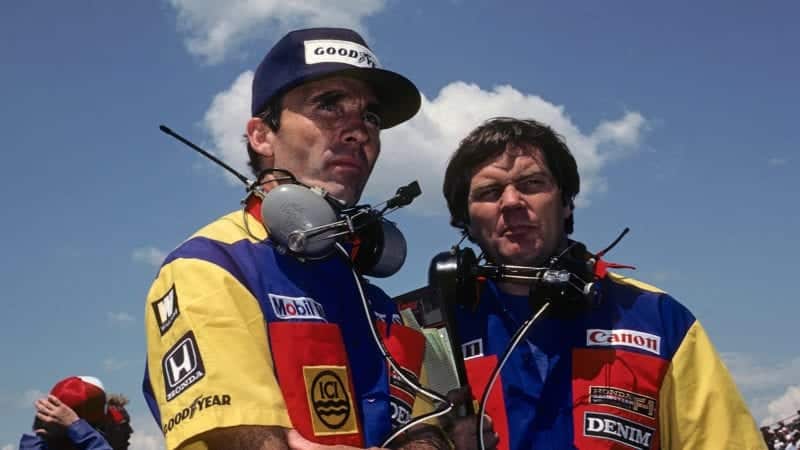
Patrick Head (right) and Frank Williams (left) formed a title-winning bond through the 70s, 80s and 90s
Paul-Henri Cahier/Getty Images
He now lives in Cagliari, in Sardinia, with his wife Monica and their daughter, Sophie. They appear to be greatly enjoying their life there. He keeps in touch with some of his old F1 chums, but for the most part he seems to be settled peacefully and blissfully in his Mediterranean island idyll. I have been to Cagliari twice, the first time in November 2002 and the second time in November 2003, and I thoroughly recommend it to you, for it is a truly lovely place. In 2002 I was there to report on the final round of that year’s Euro Formula 3000 Championship — which, as the only non-Italian journalist present, I did as a favour to Pasquale Lattuneddu, Bernie Ecclestone’s then right-hand man in F1, often dubbed F1’s ‘paddock policeman’. A proud Sardinian, Pasquale was pulling whatever strings he could to achieve a bit of positive media coverage for ‘his’ race.
The circuit was tight and twisty, run on public roads encircling the Stadio Sant’Elia stadium, which had hosted three football matches played by England during Italia ’90, but what made it of historical significance was not so much that World Cup connection, nor even that it was the first proper motor race ever staged on Sardinia, but that it was the first street race run on Italian soil since the 1967 Gran Premio di Caserta, which utterly tragic Formula 3 race took place on June 18 of that year on the Caserta street circuit near Naples.
I will explain why that race was so tragic in a little while, but first I should tell a few stories about motor racing in Cagliari, starting with the fact that the 2002 Euro F3000 race there was attended by 130,000 deliriously happy Sardinians and was won by Jaroslav Janiš from the Czech Republic. The following year — 2003, which was the final year, for there were only ever two pukka race meetings in the Sardinian capital — Lattuneddu invited a dozen or so F1 journalists, including a few Brits, and there were to be two races: a Euro F3000 round and a so-called Sardinia F3 Masters. The first was won by Jaime Melo, from Brazil, and the second by Robert Kubica, from Poland, driving with a plastic brace and 18 titanium bolts in his recently broken left arm: an injury far less severe than that which he would sustain to his right arm in a rallying accident in Italy eight years later, but surely debilitating nonetheless.
Fernando Alonso and Jarno Trulli were on hand to do demo-laps in their Renault R23B F1 car — the very chassis that Alonso had driven to Hungarian Grand Prix victory a couple of months before — and Jean Alesi was there to give ‘taxi rides’ to journalists and local dignitaries in his Mercedes CLK DTM car. I was one of Alesi’s passengers and, at my suggestion, he drove our laps absolutely flat-out. Indeed, on one of the left-hand turns he pitched that big Merc into a magnificent power slide, delicately tapping the armco on my side as he did so, his right foot never flinching from its position buried on the loud pedal.
Lattuneddu had invited not only specialist motor sport journalists from the UK such as your humble correspondent, but also Stan Piecha of The Sun, Ray Matts of the Daily Mail, and Ian Gordon of the News of the World. More worrying still, he expected them to be able to persuade their hard-nosed and football-obsessed sports editors to find space in their newspapers for reports of what were, with the best will in the world, races of remarkable obscurity and therefore precious little interest to their almost exclusively British readers. Over a few beers we motor sport specialists pondered their quandary with them, and we came up with a plan.

